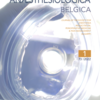Management of Acute Respiratory Distress Syndrome in COVID-19 Patients
Acute Respiratory Distress Syndrome, COVID-19, Pulmonary Ventilation, Antiviral Agents, Dexamethasone
Published online: Jun 23 2022
Abstract
Acute respiratory distress syndrome (ARDS) is a life-threatening condition characterized by an acute, diffuse inflammation leading to pulmonary edema and hypoxemia. The pathophysiology of the lung failure in COVID- 19 ARDS is a combination of the viral infection and the immune response of the host. ARDS due to COVID-19 appears to be similar to the non-COVID-19 ARDS, with exception of hypercoagulability. The mortality due to ARDS remains high and the treatment focuses on supportive measures, such as lung-protective ventilation strategy with small tidal volumes, low driving pressures and PEEP-titration, early consideration of prone positioning and a restrictive fluid management. Oxygen should be titrated, and permissive hypercapnia might be necessary to achieve lung-protective ventilation. The use of extracorporeal membrane oxygenation (ECMO) in COVID-19 ARDS is restricted as a rescue therapy in patients who remain hypoxemic. ECMO should be reserved to experienced ECMO centers. Prophylactic anticoagulant therapy is indicated to reduce the formation of thrombi in the microcirculation of organs, especially in the pulmonary microvasculature. Steroids may reduce the host’s immune response and improve mortality in patients requiring oxygen supplementation or invasive ventilation.
